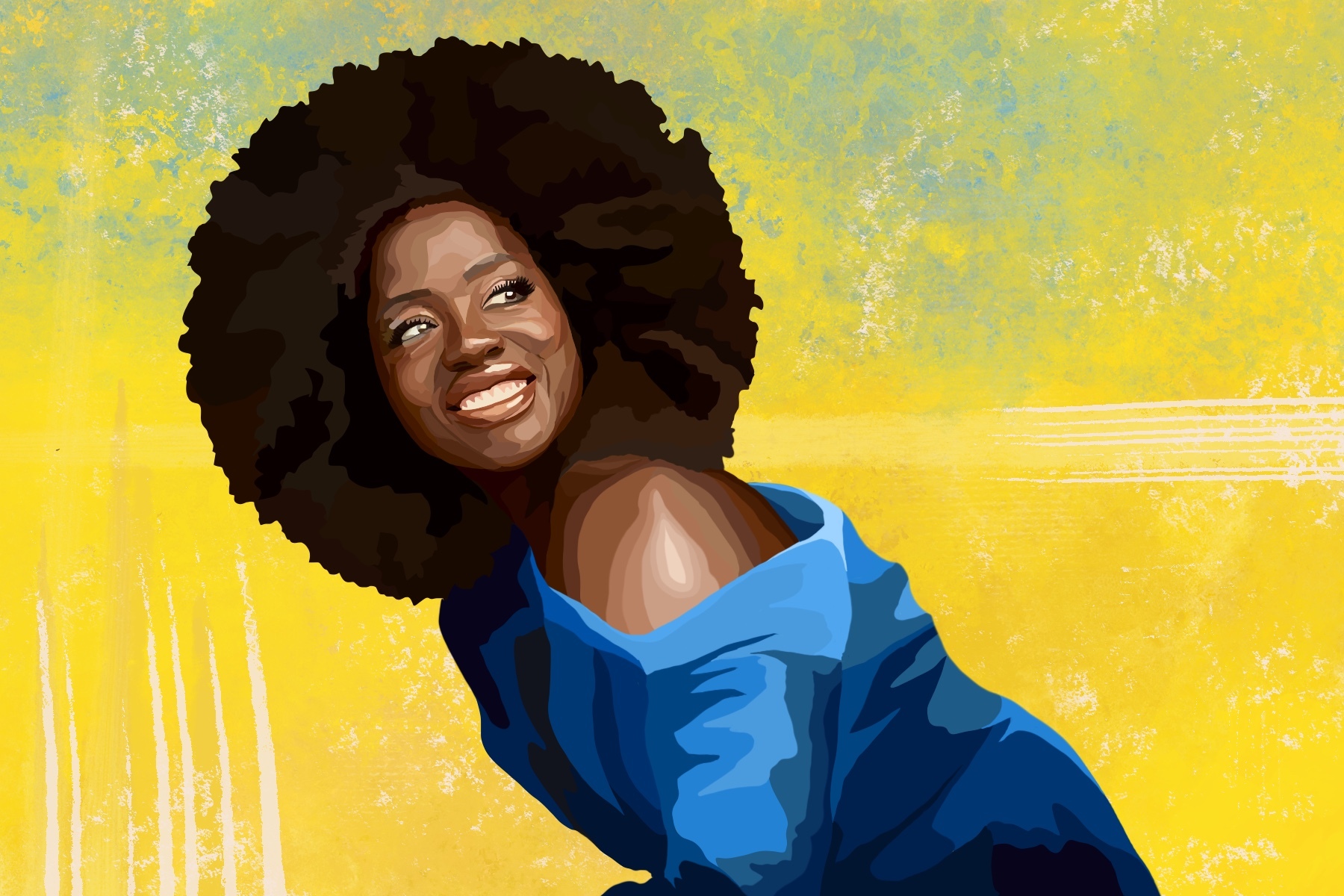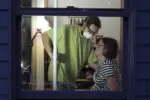Thirty-seven years. This is how long the current revival of popular culture magazine Vanity Fair has existed (the original imprint ran from 1913 to 1936). The magazine, which has a circulation of over 1 million, made history this month. For the first time, Vanity Fair’s cover has been scooped by a Black photographer.
Dario Calmese photographed Oscar-winning actor Viola Davis for the July/August issue of Vanity Fair. Davis dazzles in her full-shaped afro and blue backless dress. The intention behind his first major magazine cover was to capture “a re-creation of the Louis Agassiz slave portraits taken in the 1800s — the back, the welts. This image reclaims that narrative, transmuting the white gaze on Black suffering into the Black gaze of grace, elegance and beauty.”
While many are praising Calmese for this outstanding achievement, others are wondering why it took the publication so long to amplify Black photographers.
Presenting our July/August cover star: @ViolaDavis. The Oscar winner—who’s set to star as Michelle Obama and blues legend Ma Rainey—talks to @SoniaSaraiya about her journey out of poverty and into the deeply troubling Hollywood system. https://t.co/NKm0nGeSbP pic.twitter.com/8QlGbh3OTS
— VANITY FAIR (@VanityFair) July 14, 2020
Meet the Photographer
Based in New York City, Dario Calmese is an artist, writer, director and brand consultant. He is also an incredibly decorated freelance photographer who is inspired by his community and ethnic background.
The 38-year-old has been featured in The New York Times, CBS and NYU and has even worked with Beyoncé. The St. Louis native received his master’s in photography from the School of Visual Arts and is classically trained in ballet.
According to Calmese’s website, he “serves on the advisory board of The Museum at FIT and is a former Ideas City Fellow at the New Museum in New York City … Most recently Dario curated Fashioning the Black Body (2019), and his show direction for the fashion brand Pyer Moss has been consistently hailed in Vogue and The New York Times as the ‘best show of Fashion Month.’”
Calmese’s first assignment with Vanity Fair was to shoot photos of singer and actor Billy Porter. Since then, he has captured actors such as George MacKay and Adrienne Warren.
For Calmese, this opportunity means everything. He believes providing underrepresented communities with resources is so important for collective advancement.
“I don’t think it’s about black and white,” he said. “I think it’s about opportunity. I think that we mistake talent for access to opportunities.”
With the rise of the Black Lives Matter movement, Calmese also says that the decision for him to be the first Black photographer for the magazine was not reactive, but rather proactive.
“I worried that people would worry my selection was some kind of reactionary decision to the moment we’re in, that Vanity Fair was just scrambling to find a black photographer. But it was actually the normal story. I worked with them a year ago and did four shoots with them before this,” said Calmese.
Vanity Fair’s Past Lack of Diversity
While doing a quick Google search for the past editor in chiefs of Vanity Fair it’s hard to avoid the obvious — a lack of racial diversity among the heads of the magazine. The first two editors in chief of the most recent incarnation of the magazine, Tina Brown (1984-1992) and Graydon Carter (1992-2017), are both white. For many years, the head photographers and writers were from the same backgrounds, such as world-renowned photographer Annie Leibovitz.
In fact, the magazine has come under fire in the past for its lack of representation of people of color, as well as members of the LGBTQIA+ community.
Vanity Fair faced a lot of backlash in 2015 when they featured nearly all white actors on their annual Hollywood cover, which is supposed to represent the best actors in the industry for that particular year.
After the backlash and many calls for people to boycott the magazine, Vanity Fair released its cover the following year with far more representation. The cover featured only women, including Jane Fonda, Viola Davis, Cate Blanchett and Jennifer Lawrence. Many called the cover more diverse than the 2016 Oscar nominees.
Despite Vanity Fair’s past lack of representation and often covert racism, with new leadership, the publication has made great strides over the past couple of years to pave the way for a new and more diverse audience.
Call for Brands To Speak Out
In 2018, Vanity Fair announced Radhika Jones as their new editor in chief. Since then, Jones has made it a priority to highlight diverse stories.
“It was something I had noticed about Vanity Fair myself, from the outside, that lack of representation,” said the Harvard and Columbia graduate. “I was determined to change it when I took over as editor in chief — not just as a corrective measure but because it is my job, and the magazine’s job, to center people who are visionaries, who are moving the culture forward.”
In her letter in the recent issue, the Indian American editor points out that there have only been 17 Black people individually featured on the cover between 1983 and 2017. She agrees with Viola Davis that in the past, the magazine has “had a problem with putting Black women on the covers.” She also says Vanity Fair is committed to portraying many voices in order to amplify and inspire people of all backgrounds and identities.
Since Jones’ tenure, Vanity Fair has featured many Black cover subjects, from Lena Waite in 2018 to Janelle Monaé in 2020. As a result, they have seen a large increase in viewers on every platform, as well as an increase in subscriptions.
As protests continue across the world, many individuals are asking for brands and companies to do better. Fashion publications have specifically been singled out. Condé Nast, who publishes both Vanity Fair and Vogue, put out a general statement:
“Condé Nast is focused on creating meaningful, sustainable change and continues to implement an inclusive hiring process to ensure that a diverse range of candidates is considered for all open positions.”
Having a Black photographer shoot the front cover is a step in the right direction, but as many activists have said, “This is not a moment, this is a movement,” and the hope is that Vanity Fair will continue the fight by being an inclusive space for everyone.

















